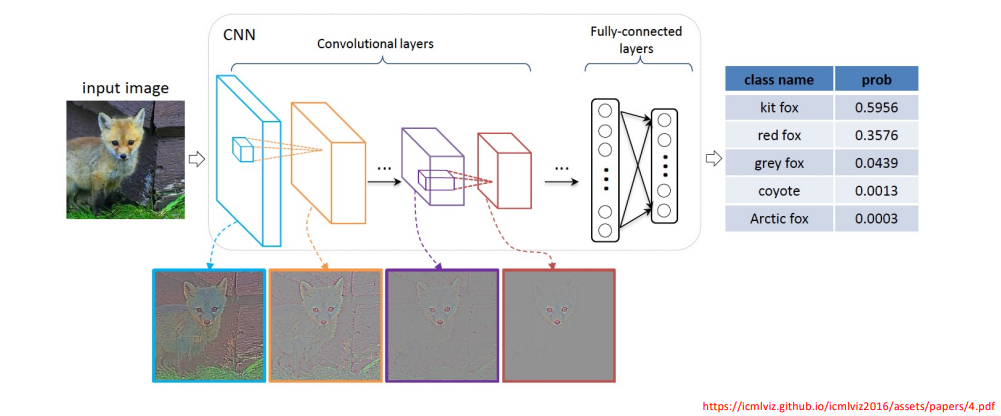今日教學CNN
了解捲積層、池化層、平坦層、丟棄層各層相關係數的設定影響
捲基層: 積層是一組平行的特徵圖(feature map),它通過在輸入圖像上滑動不同的卷積核並執行一定的運算而組成
池化層: 主要是對卷積層的輸出進行篩選或者擷取統計上的特徵,並將重要的特徵或資訊保留下來,同時將資料的維度減少
平坦層: 在 CNN 前面幾層都是卷積層跟池化層交互轉換,後半段會使用多層感知器來穩定判斷結果。所以再接入多層感知器前,先必須將矩陣打平成一維的陣列作為輸入,然後再串到後面的隱藏層跟輸出層。
丟棄層: 提供一個簡單且有效率的方式來避免overfitting在訓練過程中,每次隨機關閉某些神經元,對剩下的神經元進行訓練
使用CIFAR10來練習
from tensorflow.keras.datasets import cifar10
# Load Data
(train_X, train_y), (test_X, test_y) = cifar10.load_data()
# Prepare X, y
X_train = train_X.astype('float')/255
X_test = test_X.astype('float')/255
from tensorflow.keras.utils import to_categorical
y_train = to_categorical(train_y, 10)
y_test = to_categorical(test_y, 10)
#建構CNN網路
from tensorflow.keras.models import Sequential
from tensorflow.keras.layers import Conv2D, MaxPooling2D, Flatten, Dense
CIFAR10_Model = Sequential()
CIFAR10_Model.add(Conv2D(32, (3,3), activation = 'relu', input_shape = (32, 32, 3)))
CIFAR10_Model.add(MaxPooling2D((2,2)))
CIFAR10_Model.add(Conv2D(64, (3,3), activation = 'relu'))
CIFAR10_Model.add(MaxPooling2D((2,2)))
CIFAR10_Model.add(Flatten())
CIFAR10_Model.add(Dense(128, activation = 'relu'))
CIFAR10_Model.add(Dense(10, activation = 'softmax'))
CIFAR10_Model.summary()
CIFAR10_Model.compile(optimizer = 'adam', loss = 'categorical_crossentropy',
metrics = ['acc'])
from tensorflow.keras.callbacks import TensorBoard
CIFAR10_TB = TensorBoard(log_dir = './CIFAR100810', histogram_freq = 1, write_images = True)
CIFAR10_Model_History = CIFAR10_Model.fit(X_train, y_train, epochs = 20, batch_size = 256,
callbacks = [CIFAR10_TB],
validation_split = 0.2)
#評估模型
Test_loss, Test_acc = CIFAR10_Model.evaluate(X_test, y_test)
print(f'Testing loss is {Test_loss} and Testing accuracy is {Test_acc}')

